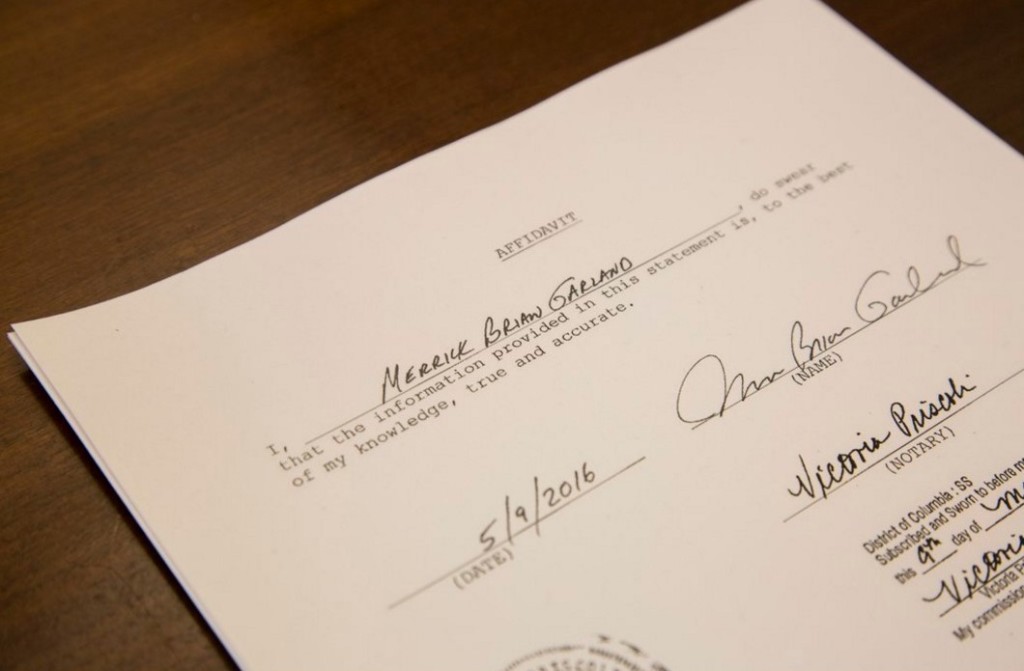Searching Judge Garland's Questionnaire for Clues on his Reform-Related Positions
 Though Fix the Court has not and will not take a position regarding President Obama’s nomination of D.C. Circuit Chief Judge Merrick Garland to the Supreme Court, a number of issues for which FTC advocates were mentioned in the questionnaire the candidate submitted to the Senate Judiciary Committee yesterday. A summary of these mentions is below.
Though Fix the Court has not and will not take a position regarding President Obama’s nomination of D.C. Circuit Chief Judge Merrick Garland to the Supreme Court, a number of issues for which FTC advocates were mentioned in the questionnaire the candidate submitted to the Senate Judiciary Committee yesterday. A summary of these mentions is below.
“The answers Judge Garland gave in his questionnaire are demonstrative of the stark differences in openness and accountability practices between circuit court judges and Supreme Court justices,” FTC executive director Gabe Roth noted.
Media and public access
Judge Garland does not mention his views on the Supreme Court’s broadcast media ban in his questionnaire.
He does note in the “interviews” section of the form on p. 37 that when the D.C. Circuit began implementing a same-day audio policy for oral arguments in 2013, the court issued a press release, in which Garland was quoted as saying, “The court is pleased to provide this new level of public access to our proceedings,” which was his entire quote at the time.
Term limits
Judge Garland writes nothing about judicial tenure in his questionnaire.
Ethics
Judge Garland points out in the “potential conflict of interests” section on p. 139 that while the Code of Conduct for U.S. Judges “is not formally binding on members of the Supreme Court,” which is an important distinction, he would, however, “resolve any conflict of interest by looking to the letter and spirit of the code” as well as to “the Ethics Reform Act of 1989, 28 U.S.C. §455 and any other relevant prescriptions.”
Recusals
The most detailed part of Garland’s questionnaire in terms of Fix the Court’s reform proposals comes in the section about recusals beginning on p. 97. In his nearly two decades as a federal appeals court judge, Garland states that he stepped aside from 66 cases due to a financial conflict, as well as more than 150 other cases due to his previous work in private practice and in the Justice Department or due to a relationship with a litigant or an attorney. He even notes a number of recusals where the reasoning behind which he can no longer recall.
Though Garland does not describe which of his financial holdings or relationships triggered which recusal, it is noteworthy that a Supreme Court nominee is asked to provide more information to the public about his conflicts of interest than members of the high court themselves.
Financial disclosures
In what appears to be a reference either to blind trusts or divesting from securities, Judge Garland writes on p. 139 that he “would seek guidance from judicial ethics officials to structure my financial investments to minimize the potential for conflicts.”
According to his 2014 financial disclosure report, Judge Garland owns shares in more than a dozen individual companies, including Pfizer, GE and Procter & Gamble.
Public appearances
Beginning on p. 12, Garland describes nearly 200 public, out-of-court appearances that he has made during his career, with the vast majority coming during his years as a federal judge and most of those in a legal setting, such as at a law school, moot court competition or bar association. As with public appearances for the justices themselves, these out-of-court appearances were not publicized by the D.C. Circuit press office ahead of time.